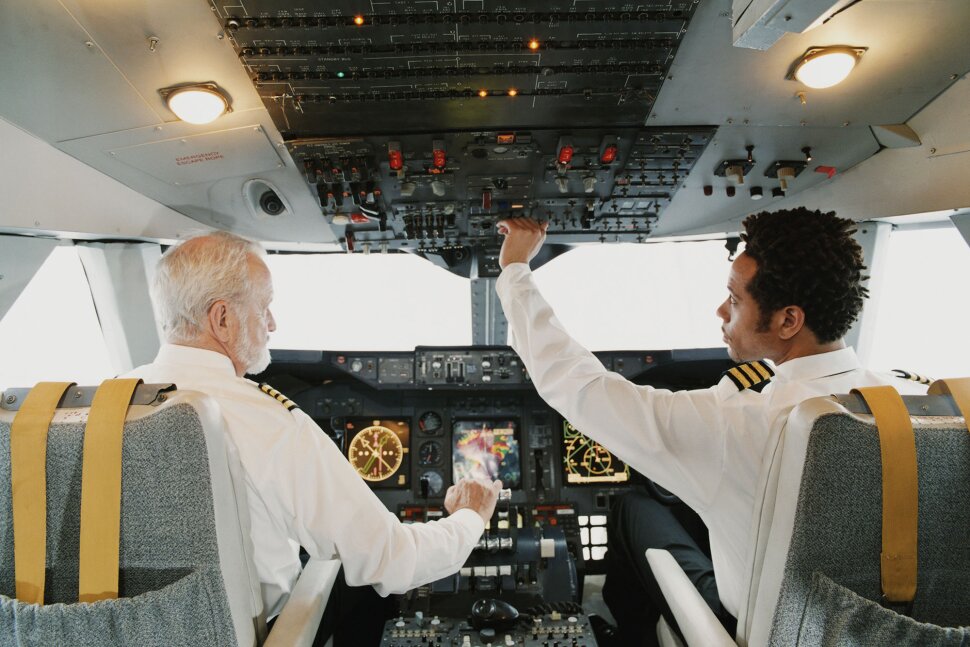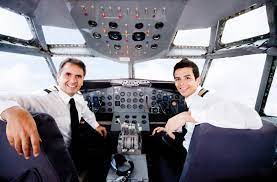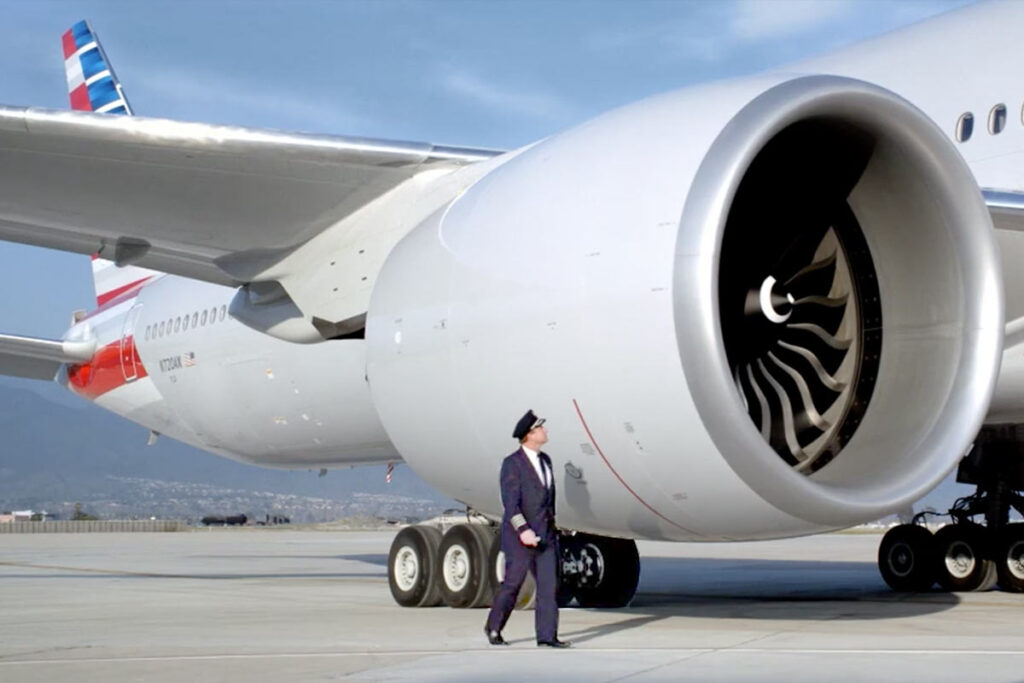How to Become a Pilot (Steps and Requirements)

A pilot is a person who works in the aviation industry and is qualified to fly an airplane and transfer people or cargo safely from one place to another. There are various opportunities in the public and private sectors, as well as in educational settings, in the diversified field of aviation. But it is necessary to know how to become a pilot. That is what this article will teach you.

Pilots may be responsible for carrying people, military personnel, private goods, commercial cargo, or other forms of cargo, depending on what area of aviation they work in. To become a pilot, the following are required: years of study, training, and licensing.
You can plan out your career path and know what to expect if you start early enough. You must have at least ten years of piloting experience to be eligible for the highest-paying positions. To fulfill the prerequisites for a profession as a pilot, put in a lot of effort and practice.
What does a pilot do?
Pilots can choose to fly large commercial airplanes or helicopters. Other pilots use cargo aircraft to transport substantial quantities of mail, cars, machinery, or other products from one place to another.
The most well-known pilots are those that carry commuter or vacationing passengers for an airline firm. Although operating the aircraft is their main duty, they also have other responsibilities during the day.
Before taking off, pilots confirm flight plans and assess the weather. Prior to takeoff, they also conduct pre-flight inspections and review flight logs. They are in charge of ensuring the security of the entire crew and passengers during the flight. https://enoughinfo.com/how-to-become-a-pilot/
In order to stay informed of changes to the flight plan or safety concerns, they are frequently forced to make split-second judgments and are in continual touch with the Federal Aviation Administration (FAA).
In the military, pilots can pursue careers that include moving troops, equipment, or supplies for the government. Furthermore, in combat, rescue, or reconnaissance missions, military pilots operate aircraft, bombers, and helicopters. As test pilots, certain military officials are paid to evaluate new and experimental aircraft prototypes.
Pilots often operate jets or light aircraft in the private sector. They serve their clients’ travel demands on demand and are employed by businessmen or celebrities. Private pilots may be engaged solely by a company or wealthy individual, or they may work as independent contractors providing services for hire to numerous clients. Pilots with sufficient industry experience may ultimately elect to work for or found an aviation school.
Pilots coach aspiring aviators on the principles of flight at the school. In private instruction, subjects like safety, aviation history, and flying techniques are covered. They assist students in obtaining their instrument rating or private pilot certificate.
So, are you suited to be a pilot?
How many years will it take to become a pilot?
A bachelor’s degree in professional flight should be obtained in 3–4 years, which is the ideal amount of time to become a pilot. Waiting to begin your adventure until you are enrolled in an accredited institution is advised because education is helpful for consistency of instruction.
Step 1
Gaining Education
1. Graduate High school
You require high school graduation to enroll in flight school in the United States (and perhaps internationally, like Australia). To get ready early, work hard in class and think about taking physics or mathematics classes. Earn a General Education Development (GED) certificate if you don’t have your high school diploma.
- Some aviation instructors teach flying to kids as early as 16 years old. Ask about the policies of nearby flight instructors by giving them a call. You might be able to start your training earlier.
2. Consider joining the military
Joining the military can be a fantastic method for you to learn to fly and obtain experience if you’re on the fence about going into the service. The Coast Guard, National Guard, Navy, and Air Force all provide aviation instruction in the US. You will already have accumulated flying time by the time you return to civilian life.
- You must be at least 18 years old in order to enlist in the US military. You can join with parental permission if you’re 17 years old. How To Make A Nose Piercing Heal (Step–by– Step)
3. Obtain a bachelor’s degree in aviation or a related field.
While not necessary for all pilot positions, most flying schools or businesses prefer that applicants have a four-year college degree. Aeronautics and aviation degrees are offered by some colleges. If not, consider pursuing a degree in physics, math, or engineering.
While attending college, enroll in humanities or liberal arts classes. Admissions offices for flight schools seek out candidates with a well-rounded education.
4. Take flight training classes
You must enroll in flying lessons with a teacher who is certified by the Federal Aviation Administration if your college degree did not include aviation (FAA). The FAA advises pilots to wait until they have enough experience to successfully perform a cross-country solo flight before applying for licensing.
Be aware that getting a license takes a lot of experience, and that getting a license involves a lot of training.
5. Go to flight school
Flight schools often fall into one of two categories: Part 61 training or Part 141 training. The most typical version is Part 61, which is adaptable and lets you move at your own pace. Instructors can modify it to meet individual needs. Part 141 training is more planned, moves more quickly, and has more thorough lesson plans.
Read Also: 22 Fast Home Remedies to Get Rid of a Cough

Step 2
Obtain a license
1. Get your medical certificate
There are various steps involved in getting through a physical. You must first submit an online application with your demographic and medical background information filled out. The next step is to see a physician who can vouch for your physical health in a variety of contexts (including height/weight, vision, mental health, and other areas).
- You can choose to submit an application for a first-class, second-class, or third-class medical exam. Future airline pilots are required to travel first class. Commercial pilots must complete the second class. The least restrictive class, third, is necessary for student licensure.
- There is still hope if you fail your physical examination. Treatment could be able to fix it. Deaf pilots, for instance, can be certified for aircraft with an exemption for missions requiring radio communication. Restricted licensure may be available to those with additional disabilities.
2. Get your student pilot license
You can be approved for a student pilot license once you have acquired your medical certification. This will enable you to fly with your instructor in less constrained circumstances while pursuing full licensing. To respond to radio calls from other pilots, student pilots must be able to read, write, and comprehend the English language. If English is your second language, make sure you study it well before applying.
3. Acquire more flight time
A pilot-in-training must log at least 250 hours of flight time before applying for a license. These hours can be tallied through military training, flight school, or practice sessions with an FAA-licensed instructor.
- Prior to being eligible for new pilot positions after receiving your license, you must accrue more flying time (like working at a commercial airline). After graduation, many pilots become flight instructors to increase their flying time.
acquire more flight time 22 Fast Home Remedies to Get Rid of a Cough
4. Ace the written test
You must pass a written exam including safety information and a skills test in order to obtain your pilot’s license. An FAA-certified teacher will monitor your written exam. So that you are ready for your test, prepare ahead of time and get enough of rest the night before.
5. Obtain additional certification
Depending on your objectives as a pilot, you might need additional certification to meet the requirements for some positions. The FAA offers certification in a number of fields, including multi-engine aircraft and flight instructors. An aviator badge is given to U.S. military pilots as an indication of their particular certification and status. How To Make a Gravity Bong ( Step by step)

Step 3
Obtaining work
1. Look for a range of job openings
Depending on how many flight hours you’ve accrued, a wide range of employment is open to flight school graduates. While accumulating your hours, you can work for emergency services, air shows, firefighting or forestry organizations, or as a flight instructor.
- Different pilot positions will call for varying amounts of training and experience. If you are certain of the type of pilot position you want, be aware of the prerequisites and credentials needed to apply.
- Additionally, some pilots work as engineers for airlines. If you’re interested, enroll in an engineering program in college to learn the necessary information. If you want to work for commercial airlines, you’ll additionally need to obtain a second engineering license.
2. Consider employment with the military
The U.S. Air Force offers over 150 flying jobs, each with a unique set of enrollment requirements. To find out what occupations you qualify for, take the Armed Services Vocational Aptitude Battery (ASVAB).
- Ask to be included in the “fast ship” list if you need a job right away. You will be called in to replace any departing recruits.
3. Gain enough hours to become a commercial air pilot
Working for a commercial airline is the ultimate dream for many pilots. You must have 1500 hours of flight time to be hired by a commercial airline. The majority of big airlines desire at least 3000.
- Additionally, most airlines test applicants’ IQ and psychological stability.
- First officers with small airlines are a common place for beginning airline pilots to work so they can obtain experience flying customers in a variety of weather circumstances. Later, you may be eligible for positions with better salaries. How to do Crunches (Step-by-Step Guide 2023)
4. Obtain seniority to open up more opportunities
The majority of airline positions require seniority to advance. Pilots can become eligible for first officer jobs after one to five years. First officers might become captains after 5–15 years. Your seniority will help you get better flight assignments and more vacation time.
- Depending on their workplace, seasoned pilots can rise beyond the captaincy to chief pilot, director of aviation, and other positions.
Is pilot still a good career?
Indeed, choosing a profession as a commercial pilot is a wise decision. Wherever you land, you get to fly through the air, work abroad, and interact with a lot of fascinating people. However, each job has advantages and disadvantages.
What are the risks of being a pilot?
- Cabin Air Quality.
- Cancer.
- Diseases Spread by Circadian Rhythm Disruption (Jet Lag).
- Communicable Diseases.
- Cosmic Ionizing Radiation.
- Stress at work
- Musculoskeletal Conditions
- Noise/Hearing Loss.
conclusion
You can train to be a pilot. ATP has aided thousands of people, including people like you, to become pilots.




